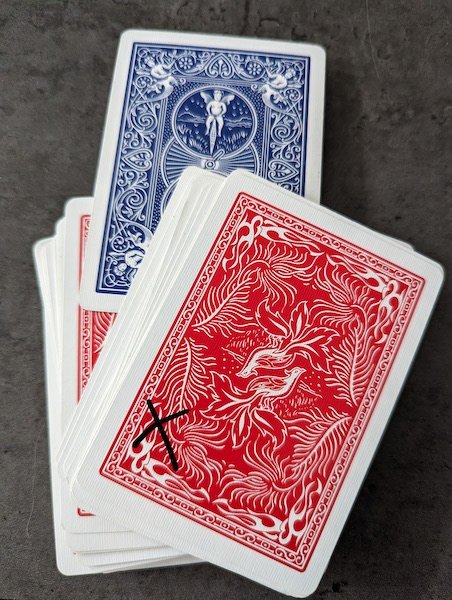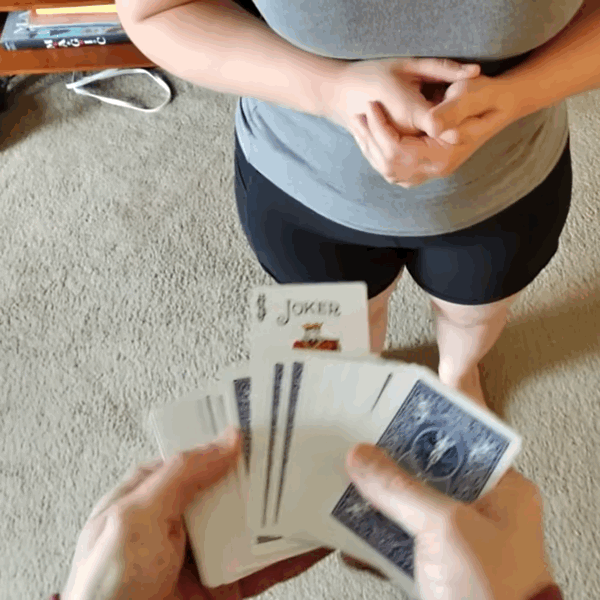A recent email from reader Daniel D.
I bought Leviosa [the floating haunted deck] and have been performing it for weeks now. You asked for people to write in to let you know how they felt about the trick and I was planning to write in and give you a solid review and tell you that the people I’ve performed it for were surprised and fooled by the trick. That was the impression I was getting. Then this weekend I was at a barbecue and performed some quick tricks for a group there and one of them said “Did you bring your flying deck?” And then his wife told some of the other people there “He’s got this cool deck that floats up into his hand.”
This rubbed me the wrong way. It was clear they knew it was a special deck, as you surmised. But when I first showed them the trick I would have categorized it as getting a good reaction. And that they saw it as something more than a trick deck that flies into your hand. […]
How do you get honest feedback or learn to trust the feedback you’re getting?
In magic—well, probably in a lot of things, but definitely in magic—there is a desire to interpret the spectator’s reaction in the most positive light.
You’ll see this when a magician uses hacky joke lines in their scripting. They’ll use some tired joke and the person they’re performing for might smile at it and the magicians thinks, “They smiled. That joke worked again. Definitely have to keep it in my act.”
Or if they clap at the end of the trick, the magician thinks, “I’m getting applause, they liked the trick.” And if the audience smiles and claps the magician thinks, “Oh shit, I’m really knocking them dead!”
I’m going to give you some harsh truth. When it comes to magic in social settings, these reactions:
Smiles
nods
polite applause
“very clever”
“you’ve got me fooled”
a low-key “wow”
These are signs of a bad trick and/or a bad performance.
In social magic, a nice response is a negative response.
Magic is meant to be stimulating. If you’re a string quartet playing at a garden party, then getting a “nice” reaction is what you’re looking for. But as a magician, you’re supposed to be messing with their minds on some level. A pleasant response indicates an un-messed-with mind.
Think about a stripper. If a stripper gets kind smiles and polite applause, is she a good stripper? No. Because a stripper is supposed to be getting people all riled up. The audience should be hooting and hollering and sweating and blotting the pre-cum from their sweatpants.
Or imagine a horror movie, and the monster pops out on screen and the audience applauds politely. Is that a successful horror movie?
The social norm when someone shows you something is that you smile and maybe politely clap and say something pleasant.
If your trick is strong, it should get a reaction that breaks the social norms.
What you want is cursing, silence, anger, hysterical laughter, violence (e.g., a shove, or a punch in the shoulder), running away, yelling, crying, stuttering, grabbing a friend, freezing up/being incapable of giving a response, or something along those lines.
Not all those at once (that would be weird). And it doesn’t need to be an extreme version of any of those things. But if you just get pleasantries afterward, that is the bare-minimum of a response that an audience will give in a casual situation. You shouldn’t really be satisfied with that.
A “nice” response is just a transactional way of putting an end to the moment.
As far as seeking out feedback goes, I will give you some advice from Mr. Beast that I read in a newsletter recently from George Mack…
How Mr. Beast Asks For Feedback
Mr. Beast has a fascinating mind.
I've been watching some of his interviews -- he is the simple genius at the far right of the mid-wit meme.
I noticed one gem in his interviews.
When Mr. Beast asks for feedback, he doesn't say "feedback".
The problem with asking for feedback is that people give you a polite politically correct response.
He hacks around this by asking people to "roast" his videos instead.
When we first started testing magic, we originally tried to do it in the form of a scientific or psychological experiment. That didn’t work.
It was only when we started actively asking people to critique effects, to point out the flaws, or to tell us what they were suspicious about, that we started getting honest feedback. If you want to get that kind of feedback, then you need to make it clear that’s what you’re asking for. Not every time you perform, of course. But as you break in a trick, you should have a person or two that you run it by in order to tear it apart.
Don’t just assume you have someone like that. In one session of testing many years ago, we were joined by a British friend of ours. When we were talking about testing a certain trick or technique (I don’t remember what it was) this guy said, “Oh no. That definitely flies by people. I use it all the time.” When some people in the group still expressed skepticism about the trick, he said, “Look, I perform in pubs for the rowdiest guys I know. If this didn’t fool people, they’d call me out.” And yet when we actually tested the trick with him performing, we had plenty of kind middle-aged housewives and other friendly tourists who were willing to bust him on how it was done, because they knew that’s what we wanted.
The original email asked: How do you get honest feedback or learn to trust the feedback you’re getting? To summarize my advice from this post…
How do you get honest feedback? When testing a trick, you need to specifically ask for the negatives or weaknesses the person for whom you’re performing senses in a trick.
How do you learn to trust the feedback you’re getting? Try to identify feedback that breaks the norms of social pleasantries. Strong tricks generate these kinds of responses. Okay tricks get “nice” responses.








